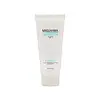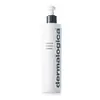What's inside
What's inside
 Key Ingredients
Key Ingredients

 Benefits
Benefits

 Concerns
Concerns

 Ingredients Side-by-side
Ingredients Side-by-side

Water
Skin ConditioningGlycerin
HumectantMyristic Acid
CleansingPalmitic Acid
EmollientStearic Acid
CleansingPotassium Hydroxide
BufferingChrysanthellum Indicum Flower Water
AntimicrobialLauric Acid
Cleansing1,2-Hexanediol
Skin ConditioningCetearyl Olivate
Butylene Glycol
HumectantSodium Lauroyl Glutamate
Sorbitan Olivate
EmulsifyingDecyl Glucoside
CleansingLimonene
PerfumingCitrus Aurantium Dulcis Peel Oil
MaskingCitrus Limon Peel Oil
MaskingEthylhexylglycerin
Skin ConditioningArachidic Acid
CleansingCitrus Aurantium Bergamia Fruit Oil
MaskingDisodium EDTA
Oleic Acid
EmollientAllantoin
Skin ConditioningDecyl Alcohol
EmollientCapric Acid
CleansingGlucose
HumectantOrbignya Oleifera Seed Oil
EmollientMalt Extract
Skin ProtectingCamellia Sinensis Leaf Extract
AntimicrobialWater, Glycerin, Myristic Acid, Palmitic Acid, Stearic Acid, Potassium Hydroxide, Chrysanthellum Indicum Flower Water, Lauric Acid, 1,2-Hexanediol, Cetearyl Olivate, Butylene Glycol, Sodium Lauroyl Glutamate, Sorbitan Olivate, Decyl Glucoside, Limonene, Citrus Aurantium Dulcis Peel Oil, Citrus Limon Peel Oil, Ethylhexylglycerin, Arachidic Acid, Citrus Aurantium Bergamia Fruit Oil, Disodium EDTA, Oleic Acid, Allantoin, Decyl Alcohol, Capric Acid, Glucose, Orbignya Oleifera Seed Oil, Malt Extract, Camellia Sinensis Leaf Extract
Water
Skin ConditioningGlycerin
HumectantCaprylic/Capric Triglyceride
MaskingSodium Cocoyl Isethionate
CleansingSodium Lauroyl Glutamate
Divinyldimethicone/Dimethicone Copolymer
Sodium Astrocaryum Murumuruate
EmollientCeramide NP
Skin ConditioningPhytosterols
Skin ConditioningPalmitic Acid
EmollientStearic Acid
CleansingHydrogenated Coconut Acid
EmollientHydrolyzed Cottonseed Protein
Skin ConditioningCitrus Aurantium Dulcis Peel Oil
MaskingTocopherol
AntioxidantXanthan Gum
EmulsifyingDimethicone
EmollientButyrospermum Parkii Butter
Skin ConditioningCarthamus Tinctorius Seed Oil
MaskingC12-13 Pareth-3
EmulsifyingPrunus Amygdalus Dulcis Oil
Skin ConditioningTetrasodium Glutamate Diacetate
Caprylyl Glycol
EmollientCitrus Paradisi Peel Oil
MaskingCitrus Reticulata Leaf Oil
MaskingMyristic Acid
CleansingTrideceth-12
EmulsifyingJasminum Officinale Oil
MaskingLinoleic Acid
CleansingAmyris Balsamifera Bark Oil
MaskingCananga Odorata Flower Oil
MaskingCitrus Limon Peel Oil
MaskingCymbopogon Martini Oil
MaskingEugenia Caryophyllus Leaf Oil
MaskingPelargonium Graveolens Flower Oil
MaskingSalvia Sclarea Oil
MaskingCitrus Limon Fruit Extract
MaskingDecyl Glucoside
CleansingCanarium Luzonicum Gum Nonvolatiles
MaskingCitrus Aurantium Dulcis Flower Oil
AstringentGuaiacum Officinale Wood Oil
MaskingRosa Damascena Flower Oil
MaskingZingiber Officinale Root Oil
MaskingDisodium EDTA
Equisetum Arvense Extract
AstringentHumulus Lupulus Extract
AntimicrobialPinus Sylvestris Cone Extract
MaskingRosmarinus Officinalis Leaf Extract
AntimicrobialHexylene Glycol
EmulsifyingLinolenic Acid
CleansingPentylene Glycol
Skin ConditioningAminomethyl Propanol
BufferingSodium Chloride
MaskingSodium Isethionate
CleansingPropanediol
SolventButylene Glycol
HumectantPolysilicone-11
Sodium Hydroxide
BufferingEthylhexylglycerin
Skin ConditioningAcrylates/C10-30 Alkyl Acrylate Crosspolymer
Emulsion StabilisingPEG-12 Dimethicone
Skin ConditioningLimonene
PerfumingPhenoxyethanol
PreservativeWater, Glycerin, Caprylic/Capric Triglyceride, Sodium Cocoyl Isethionate, Sodium Lauroyl Glutamate, Divinyldimethicone/Dimethicone Copolymer, Sodium Astrocaryum Murumuruate, Ceramide NP, Phytosterols, Palmitic Acid, Stearic Acid, Hydrogenated Coconut Acid, Hydrolyzed Cottonseed Protein, Citrus Aurantium Dulcis Peel Oil, Tocopherol, Xanthan Gum, Dimethicone, Butyrospermum Parkii Butter, Carthamus Tinctorius Seed Oil, C12-13 Pareth-3, Prunus Amygdalus Dulcis Oil, Tetrasodium Glutamate Diacetate, Caprylyl Glycol, Citrus Paradisi Peel Oil, Citrus Reticulata Leaf Oil, Myristic Acid, Trideceth-12, Jasminum Officinale Oil, Linoleic Acid, Amyris Balsamifera Bark Oil, Cananga Odorata Flower Oil, Citrus Limon Peel Oil, Cymbopogon Martini Oil, Eugenia Caryophyllus Leaf Oil, Pelargonium Graveolens Flower Oil, Salvia Sclarea Oil, Citrus Limon Fruit Extract, Decyl Glucoside, Canarium Luzonicum Gum Nonvolatiles, Citrus Aurantium Dulcis Flower Oil, Guaiacum Officinale Wood Oil, Rosa Damascena Flower Oil, Zingiber Officinale Root Oil, Disodium EDTA, Equisetum Arvense Extract, Humulus Lupulus Extract, Pinus Sylvestris Cone Extract, Rosmarinus Officinalis Leaf Extract, Hexylene Glycol, Linolenic Acid, Pentylene Glycol, Aminomethyl Propanol, Sodium Chloride, Sodium Isethionate, Propanediol, Butylene Glycol, Polysilicone-11, Sodium Hydroxide, Ethylhexylglycerin, Acrylates/C10-30 Alkyl Acrylate Crosspolymer, PEG-12 Dimethicone, Limonene, Phenoxyethanol
Ingredients Explained
These ingredients are found in both products.
Ingredients higher up in an ingredient list are typically present in a larger amount.
Butylene Glycol (or BG) is used within cosmetic products for a few different reasons:
Overall, Butylene Glycol is a safe and well-rounded ingredient that works well with other ingredients.
Though this ingredient works well with most skin types, some people with sensitive skin may experience a reaction such as allergic rashes, closed comedones, or itchiness.
Learn more about Butylene GlycolCitrus Aurantium Dulcis Peel Oil is oil from the peel of an orange fruit.
Limonene and linalool make up the majority of oils from citrus peels. Limonene has a "citrus" fragrance. Citrus peels also contain flavonoids, which have anti-inflammatory properties.
Citrus peel is also a rich source of flavonoids. Flavonoids are natural antioxidants and help protect your skin against damage. Flavonoids are a group of compounds naturally found in vegetables and fruits.
The term 'fragrance' is not regulated in many countries. In many cases, it is up to the brand to define this term. For instance, many brands choose to label themselves as "fragrance-free" because they are not using synthetic fragrances. However, their products may still contain ingredients such as essential oils that are considered a fragrance.
Learn more about Citrus Aurantium Dulcis Peel OilCitrus Limon Peel Oil is created from the peels of the lemon. It is used to add a lemon-scent to products. Lemon peel oil also has antibacterial, antifungal, and antioxidant properties. However, it may also cause phototoxicity and sensitize skin.
Lemon peel oil contains limonene, a skin sensitizing ingredient. Another component is furanocoumarin, which induces phototoxicity in skin.
Furanocoumarins bind and destabilize your DNA to increase the rate of sunburn.
Most reputable companies will remove furanocoumarins from their formulations.
Learn more about Citrus Limon Peel OilDecyl Glucoside is a glucose-based surfactant and emulsion stabilizer. It is created by reacting glucose with the fatty acids from plants.
Surfactants help clean the skin by trapping oil, sebum, and dirt to be washed away. As an emulsion stabilizer, it stabilizes the ingredients in a product by preventing them from separating.
This ingredient is biodegradable and non-toxic. This ingredient is commonly found in baby shampoos.
Decyl Glucoside is sometimes used to stabilize the UV filter Tinosorb.
Learn more about Decyl GlucosideDisodium EDTA plays a role in making products more stable by aiding other preservatives.
It is a chelating agent, meaning it neutralizes metal ions that may be found in a product.
Disodium EDTA is a salt of edetic acid and is found to be safe in cosmetic ingredients.
Learn more about Disodium EDTAEthylhexylglycerin (we can't pronounce this either) is commonly used as a preservative and skin softener. It is derived from glyceryl.
You might see Ethylhexylglycerin often paired with other preservatives such as phenoxyethanol. Ethylhexylglycerin has been found to increase the effectiveness of these other preservatives.
Glycerin is already naturally found in your skin. It helps moisturize and protect your skin.
A study from 2016 found glycerin to be more effective as a humectant than AHAs and hyaluronic acid.
As a humectant, it helps the skin stay hydrated by pulling moisture to your skin. The low molecular weight of glycerin allows it to pull moisture into the deeper layers of your skin.
Hydrated skin improves your skin barrier; Your skin barrier helps protect against irritants and bacteria.
Glycerin has also been found to have antimicrobial and antiviral properties. Due to these properties, glycerin is often used in wound and burn treatments.
In cosmetics, glycerin is usually derived from plants such as soybean or palm. However, it can also be sourced from animals, such as tallow or animal fat.
This ingredient is organic, colorless, odorless, and non-toxic.
Glycerin is the name for this ingredient in American English. British English uses Glycerol/Glycerine.
Learn more about GlycerinLimonene is a fragrance that adds scent and taste to a formulation.
It's found in the peel oil of citrus fruits and other plants such as lavender and eucalyptus. The scent of limonene is generally described as "sweet citrus".
Limonene acts as an antioxidant, meaning it helps neutralize free radicals.
When exposed to air, oxidized limonene may sensitize the skin. Because of this, limonene is often avoided by people with sensitive skin.
The term 'fragrance' is not regulated in many countries. In many cases, it is up to the brand to define this term. For instance, many brands choose to label themselves as "fragrance-free" because they are not using synthetic fragrances. However, their products may still contain ingredients such as essential oils that are considered a fragrance.
Learn more about LimoneneMyristic Acid is a saturated fatty acid. It is naturally found in milk fat. Other sources include palm oil, coconut oil, and butter fat.
Myristic Acid is an emulsifer and cleanser. As an emulsifer, it stabilizes a product by preventing ingredients from separating. Myristic Acid helps clean your skin by acting as a surfactant. It tends to gather oil and dirt on your skin to be easily rinsed away.
One study from 2021 found Myristic Acid to have anti-inflammatory properties.
Learn more about Myristic AcidPalmitic Acid is a fatty acid naturally found in our skin and in many plant and animal sources. In cosmetics, it is usually derived from palm oil. It serves many purposes in skincare, acting as a cleanser, emollient, and emulsifier.
As an emollient, palmitic acid helps soften and smooth the skin by preventing water loss. In cleansers, it helps remove oil and dirt while creating foam.
Its emulsifying properties help stabilize products by keeping water and oil-based ingredients from separating.
This may not be suitable for fungal acne-prone skin, as fatty acids like this can sometimes trigger breakouts in sensitive individuals.
Learn more about Palmitic AcidSodium Lauroyl Glutamate is the sodium salt from the lauric acid of glutamic acid.
It is a surfactant and helps cleanse the skin. Surfactants gather oil, dirt, and other pollutants from your skin so they may be washed away easily.
Stearic Acid is a fatty acid. It is an emollient, emulsifier, and texture enhancer.
As an emollient, stearic acid helps soften skin. It aids the skin's protective barrier by preventing water loss. It also provides a gentle cleansing effect without stripping away natural oils.
Stearic acid may also be used to enhance the texture of products. It can add volume and stabilize ingredients such as water and oil. This can help water and oil ingredients from separating.
Sources of stearic acid include animal or vegetable fats/oils such as coconut or shea. It can be naturally found in butter, cocoa butter, shea butter, vegetable fats, and animal tallow.
This ingredient may not be Malassezia folliculitis, or fungal-acne safe.
Learn more about Stearic AcidWater. It's the most common cosmetic ingredient of all. You'll usually see it at the top of ingredient lists, meaning that it makes up the largest part of the product.
So why is it so popular? Water most often acts as a solvent - this means that it helps dissolve other ingredients into the formulation.
You'll also recognize water as that liquid we all need to stay alive. If you see this, drink a glass of water. Stay hydrated!
Learn more about Water